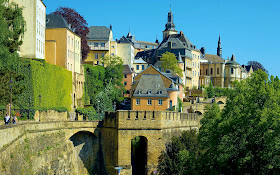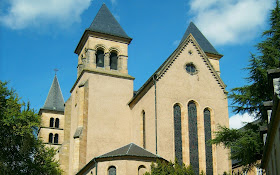Consistently ranked among the world's top-three nations in both wealth and wine consumption, life in little Luxembourg seems good. But all the lax taxation and bank headquarters conceal an absolutely charming slice of northern
Europe. The capital has a fairy-tale quality to its Unesco-listed historic core, memorably perched along a dramatic cliff top. Beyond, you’ll rapidly find yourself in rolling part-forested hills where a string of beguiling villages each form attractive huddles beneath stunning medieval castles. Then there’s all the fun of the fizz in Moselle wine country and some loveable walks to take in the pretty micro-gorges of Müllerthal. All in all, this little country has plenty of surprises. That’s some achievement given its wholesale destruction during WWII, a sad history remembered in war museums across the country.
Luxembourg is fairy-tale stuff…complete with the happy ending. The story of this land’s tumultuous history beguiles with its counts and dynasties, wars and victories, fortresses and promontories. Only the dragon is missing. It's no surprise that Luxembourgers are a proud people whose national motto,
Mir wëlle bleiwe wat mir sin (‘We want to remain what we are’), sums up their independent spirit. The population of 469,000 is predominantly rural based – the only centres of any size are the capital,
Luxembourg City, followed by Esch-sur-Alzette. Though too small for its full name to fit on most European maps, pint-sized Luxembourg (2586 sq km, or 82km long and 57km wide) is wonderfully diverse. Lush highlands and valleys in the northern Ardennes merge effortlessly with the Müllerthal’s ancient forested landscape to the east, where the vibrant town of
Echternach makes an enjoyable base. The impossibly picturesque and ridiculously romantic (not to mention tourist-flooded)
Vianden is just a short trip north from
Luxembourg City; in the southeast snakes the
Moselle Valley with its steep vineyards and riverside hamlets. In between all this are rolling farmlands dotted with pristine, pastel-toned houses and medieval hilltop castles.Luxembourg’s cuisine is French and German based. The national dish is
judd mat gaardebounen – slabs of smoked pork served in a thick cream-based sauce with chunks of potato and broad beans. Other specialities include
ferkelsrippchen (grilled spareribs),
liewekniddelen mat sauerkraut (liver meatballs with sauerkraut) and
kachkeis (a cooked cheese). Beers to sink include Bofferding,
Diekirch, Mousel and Simon Pils, after which comes a host of local fruity white and sparkling wines. From 2008 you can enjoy all this in an untainted environment, thanks to recent legislation banning smoking in restaurants and, during dining hours, in
cafés.












Комментариев нет:
Отправить комментарий